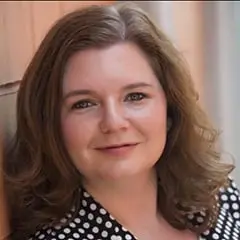 | 1 LU | HSW |
 | 1 LU | HSW |
Date / Time: October 31, 2025 | 8:30 – 9:30 am
Room: 151-152
Audience: Architects, Engineers, Educators, Facility Personnel, Contractors / Suppliers / Manufacturers, Consultants
Call to Action: Creating equitable learning environments requires turning inspiration into action. Here are three immediate steps to push the boundaries of educational design and open new horizons for students and communities:
Abstract: This session explores how the transformation of Maudrie Walton Elementary reimagines learning environments to promote equity, healing, and empowerment in a historically underserved African-American community. Addressing systemic challenges—including environmental justice concerns, disenfranchisement, and resource disparities—this project demonstrates how inclusive engagement and intentional design can create new horizons for learning environments. By centering community voices and prioritizing holistic well-being, this case study provides a roadmap for designing educational spaces that foster resilience, belonging, and opportunity.
Learning Objectives:
Educational Facility Pre-Design Planning
Ensuring the community’s vision, educational goals, future programming, standards, and best practices are implemented in the design.

Catherine is KAI’s K-12 Market Leader with over 18 years of experience designing innovative and inclusive educational environments. A licensed architect and interior designer, she specializes in creating equitable spaces that empower underserved communities through sustainability, community engagement, and impactful design. Recognized with awards from TASA, TASB, and School Construction News, Catherine is committed to transforming educational spaces into cultural and community anchors that foster connection, resilience, and equity through thoughtful design.

With over 25 years of experience in the architecture and construction industry, Madeleine Sara-Colley has dedicated her career to ensuring school districts successfully meet their bond program goals. As Program Director at PROCEDEO, she provides strategic leadership in the planning, design, and execution of large-scale educational projects, helping districts navigate complex challenges while delivering high-quality learning environments. A licensed architect, Madeleine brings a deep understanding of design, project management, and stakeholder engagement to every initiative.

Derwin serves as the Principal and Vice President of KAI Enterprises. He is the immediate past President of the Texas Society of Architects (TxA), which is the third-largest component of the American Institute of Architects. Additionally, Derwin is a former president of the Dallas Chapter of the National Organization of Minority Architects. Originally from South Carolina and a graduate of Clemson University, Derwin is married to his college sweetheart, Michele.

Kellie serves as the Deputy Superintendent of Operations for Fort Worth ISD. With almost three decades of experience in TX public schools, she is a strategic leader who is committed to the provision of exceptional learning environments for all students. Kellie firmly believes that there is a direct correlation between the learning environment and student achievement, a belief which serves as the driving force of her team.